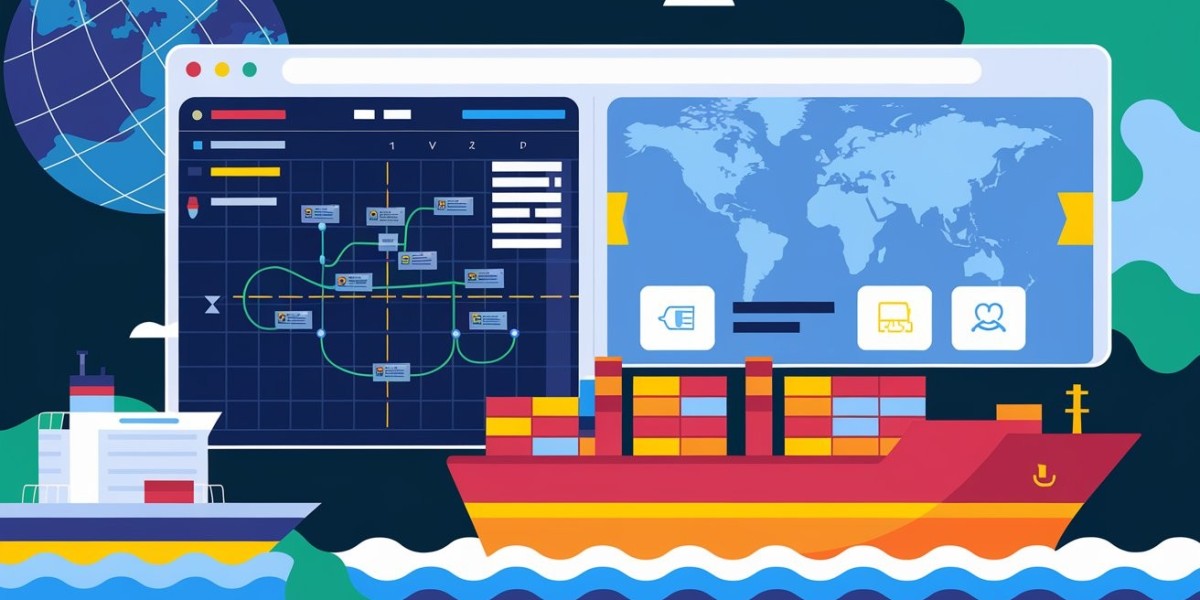Ocean Freight Software and Global Shipping Operations
In the global trade ecosystem, ocean freight plays a pivotal role as the backbone of international shipping. Managing these complex operations efficiently requires the integration of advanced technology. Ocean freight software has emerged as a vital tool, transforming how businesses handle shipping processes, optimize routes, and improve overall efficiency. This article explores how ocean freight software streamlines global shipping operations and its significance in modern logistics.
Understanding Ocean Freight Software
Ocean freight software is an integrated digital platform designed to manage the intricate processes involved in maritime shipping. From booking cargo to tracking shipments, it automates and simplifies various tasks, providing businesses with enhanced visibility, control, and cost-efficiency.
Key Features of Ocean Freight Software
1. Real-Time Cargo Tracking
Ocean freight software provides live tracking capabilities, enabling stakeholders to monitor the exact location and status of shipments at any given time. This transparency reduces uncertainties and ensures efficient coordination.
2. Automated Documentation Management
The software automates the creation and handling of crucial documents like bills of lading, packing lists, and customs declarations. This reduces manual errors, expedites processes, and ensures compliance with international trade regulations.
3. Route Optimization
Using advanced algorithms, ocean freight software identifies the most efficient shipping routes and schedules. This minimizes transit times and reduces fuel consumption, contributing to cost savings.
4. Freight Rate Comparison
The platform offers tools to compare freight rates across multiple carriers. This helps businesses select the most cost-effective options without compromising service quality.
5. Integration with Customs and Regulatory Authorities
Seamless integration with customs systems ensures smooth and timely clearance of goods, eliminating potential delays due to paperwork or regulatory non-compliance.
How Ocean Freight Software Streamlines Operations
1. Efficient Booking Processes
Ocean freight software simplifies the booking process by centralizing carrier schedules and availability. Shippers can book cargo space instantly, reducing time spent on manual communications.
2. Enhanced Collaboration
The software facilitates real-time communication between stakeholders, including shippers, carriers, and freight forwarders. This ensures smooth coordination and prevents misunderstandings.
3. Improved Load Planning
Through intelligent load optimization features, the software ensures maximum utilization of container space. This reduces shipping costs and minimizes the carbon footprint.
4. Proactive Problem Resolution
Predictive analytics tools integrated into the software identify potential disruptions, such as weather conditions or port congestion, allowing businesses to take corrective actions in advance.
5. Comprehensive Data Insights
Ocean freight software provides detailed analytics and reporting tools. Businesses can analyze shipping trends, assess carrier performance, and identify areas for improvement.
Benefits of Ocean Freight Software
1. Cost Efficiency
By automating routine tasks and optimizing operations, ocean freight software reduces overhead costs and operational inefficiencies.
2. Faster Transit Times
Optimized routes and streamlined processes result in faster delivery of goods, enhancing supply chain efficiency.
3. Improved Customer Satisfaction
Real-time tracking and timely updates ensure that customers remain informed about their shipments, building trust and loyalty.
4. Better Compliance
The software ensures adherence to international shipping regulations, reducing the risk of penalties and delays due to non-compliance.
5. Scalability
Ocean freight software supports businesses of all sizes, from small enterprises to multinational corporations, making it a versatile solution for growing operations.
Future Trends in Ocean Freight Software
1. AI-Powered Decision-Making
Artificial intelligence will play a critical role in further optimizing shipping schedules and predicting potential disruptions with greater accuracy.
2. Blockchain Integration
Blockchain technology will enhance transparency and security in the shipping industry, enabling tamper-proof documentation and improved trust among stakeholders.
3. IoT-Enabled Monitoring
The Internet of Things (IoT) will allow real-time monitoring of cargo conditions, such as temperature and humidity, ensuring the safe transport of sensitive goods.
4. Cloud-Based Platforms
Cloud-based solutions will provide businesses with on-the-go access to critical shipping data, fostering greater flexibility and collaboration.
Conclusion
Ocean freight software is revolutionizing the shipping industry by simplifying and optimizing global shipping operations. From automating documentation to enabling real-time tracking and proactive problem-solving, it empowers businesses to achieve higher efficiency and cost savings. As technology continues to evolve, ocean freight software will remain at the forefront of innovation, driving the future of maritime logistics.

